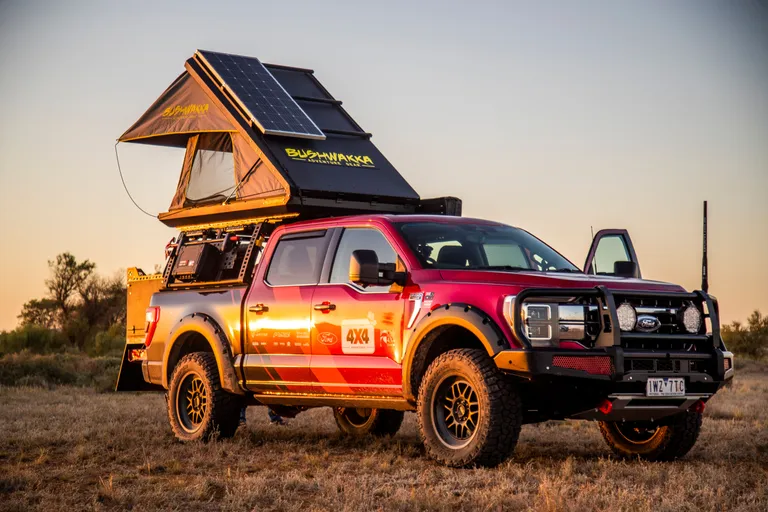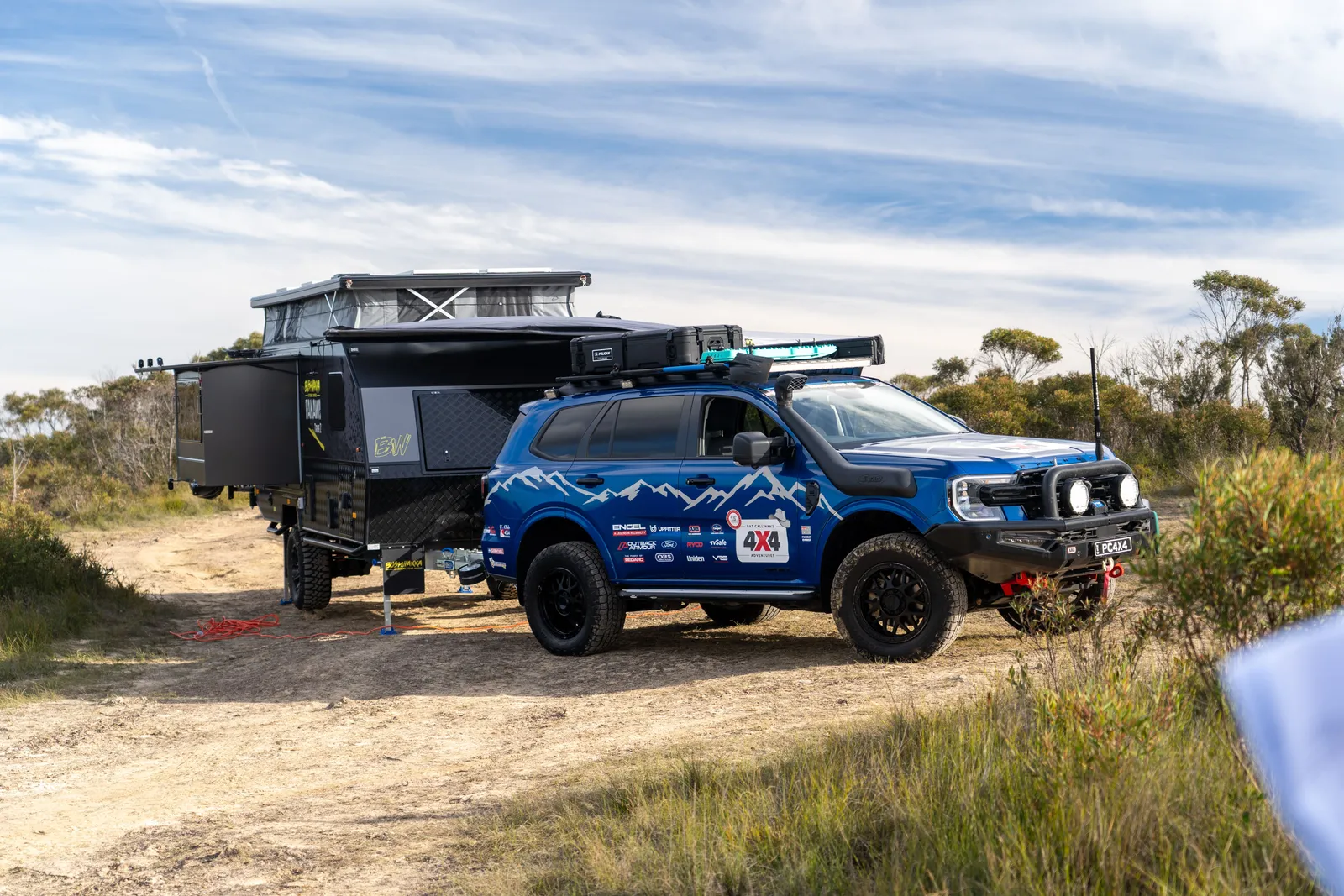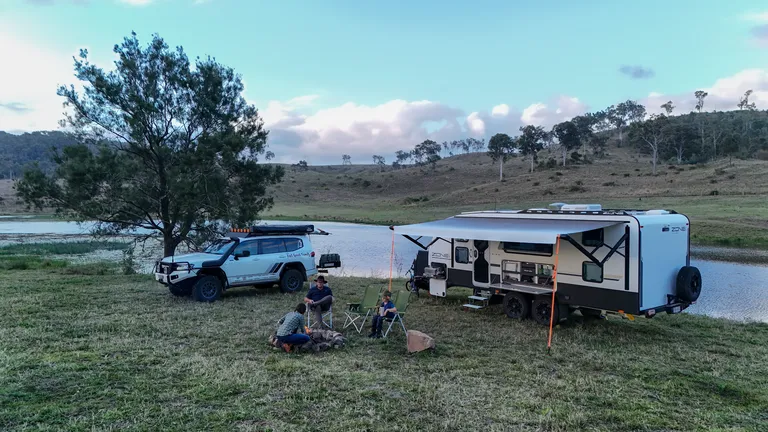Overloading your 4X4 is a common pitfall for beginners and experienced 4X4ers alike. It’s easy to get 4X4 accessory fever and overload your rig with every knick-knack known to man. All that gear comes with a cost in kilos though. That new 22ft caravan may be like living in an apartment in the bush, but it’s also like towing one there too. So, how do we make sure our vehicles are not only capable and comfortable, but compliant as well? Let’s dive into the key terms and concepts you need to know, and some tips to ensure you stay within legal limits.
Gross Combined Mass (GCM) is like the all-you-can-carry buffet limit for your 4X4 and trailer combined. It’s the total weight of your vehicle and trailer, including all cargo, passengers, and fuel. Yep, even the milk in your fridge is included in your GCM. This is the maximum load your 4X4 can handle while towing, as specified by the manufacturer. For visual purposes, picture a set of scales under every wheel on your 4X4 and caravan/camper/box trailer/whatever else you’re towing. The total of all those scales is your GCM.

ford f150 towing a boat
Now, this isn’t just a legal standard to meet, it affects how your 4X4 performs too. Imagine trying to hike up a mountain with an overloaded backpack; exceed your limit, and you’ll not only require more energy and effort to get where you’re going, but you run the risk of causing serious injuries. Similarly, exceeding your GCM can lead to serious safety issues like brake failure or loss of control, and potential legal troubles with hefty fines.
If you understand Gross Combined Mass, you’ll be all over Gross Vehicle Mass (GVM). It’s essentially the exact same concept, except it’s only measuring the weight of your 4X4, so just a set of scales under all four wheels there. Like GCM, GVM factors in the fuel on board, passengers, the loose change in the glovebox, and all of your accessories and camping kit as well.

heavily modified ford f150 ranger everest 4wd
One area that often catches people out with GVM is the Tow Ball Weight of your trailer. Remember that visual about a scale under all four wheels of your 4X4? If you’re bang on the legal limit on those scales, when you hitch up a camper, even one that’ll see you safely under your GCM, the weight of the camper pushing down on your tow ball will be seen on those four imaginary scales under your 4X4. It could be enough to tip you over your GVM even though your GCM is fine. As far as your 4X4s GVM is concerned, 200kg on the tow ball is no different than 200kg in the tub.
Tow Ball Weight is the downward force exerted by the trailer on the tow ball of your 4X4. Now most campers or caravans are going to be a single axle which makes this one reasonably easy to understand. Picture your trailer as a seesaw. By putting all the weight on the back of it, the tow ball will lift up. Move the weight forward, and that tow ball will start seeing some serious downward pressure. Ideally you want to aim for around 5-15% of your trailers total weight on the tow ball. Too much weight can overload your 4X4s rear suspension and your spotties will be pointing into the treetops. Too little tow ball weight and the trailer is likely to sway making your setup dangerous to drive, like trying to steer a grocery cart with a wonky wheel.
There’s a couple of trailer specific weights you’ll need to be aware of too. Aggregate Trailer Mass (ATM),is the maximum allowable weight your trailer can way loaded to the hilt. If you unhitched the trailer, and put a set of scales under all of its wheels, including the jockey wheel, you’d end up with your ATM. By contrast, TARE weight, is that same measurement but without any payload. It tells you how much your camper weighs before you fill the water tanks, throw a gas bottle in, sheets on the bed, or a fridge in the slide. That ATM figure will potentially run afoul of your 4X4s Maximum Braked Towing Capacity as well. On most dual cab utes these days you’ll find a limit of 3500kg, but older 4X4s can be as low as 1800kg.
A good way to stay on top of this is to refer to the manufacturer’s specifications of both your 4X4 and your trailer, then visit a weighbridge or use portable scales to get accurate measurements. You should also regularly check your setup and be mindful of any changes in load. Remember, overloading not only compromises your safety but also increases wear and tear on your vehicle, leading to higher maintenance costs and potential fines if caught by authorities.
By taking these steps, you ensure a safer, smoother journey. It’s not just about avoiding fines; it’s about protecting yourself, your passengers, and your investment in your 4X4. So, gear up, check your weights, and hit the tracks with confidence, knowing you’re well within the legal limits. Keep the shiny side up!
Comprehensive Insurance
For your 4WD, Caravan or Camper Trailer - anywhere you can legally go in Australia
Glossary Of Terms
Maximum Braked Towing Capacity
The maximum weight your 4X4 can tow when the trailer has its own braking system.
Gross Vehicle Mass (GVM)
The maximum weight of your 4X4 including the vehicle, passengers, cargo, and fuel.
Gross Combined Mass (GCM)
The total allowable weight of your 4X4 and trailer combined, including all passengers, cargo, and fuel.
Trailer TARE Weight
The weight of an empty trailer without any cargo or personal items.
Aggregate Trailer Mass (ATM)
The total weight of the trailer when fully loaded with cargo, water, and personal items.
Tow Ball Weight
The downward force exerted by the trailer on the tow ball of your 4X4, typically 5-15% of the trailer’s total weight.

4wding in the high country





